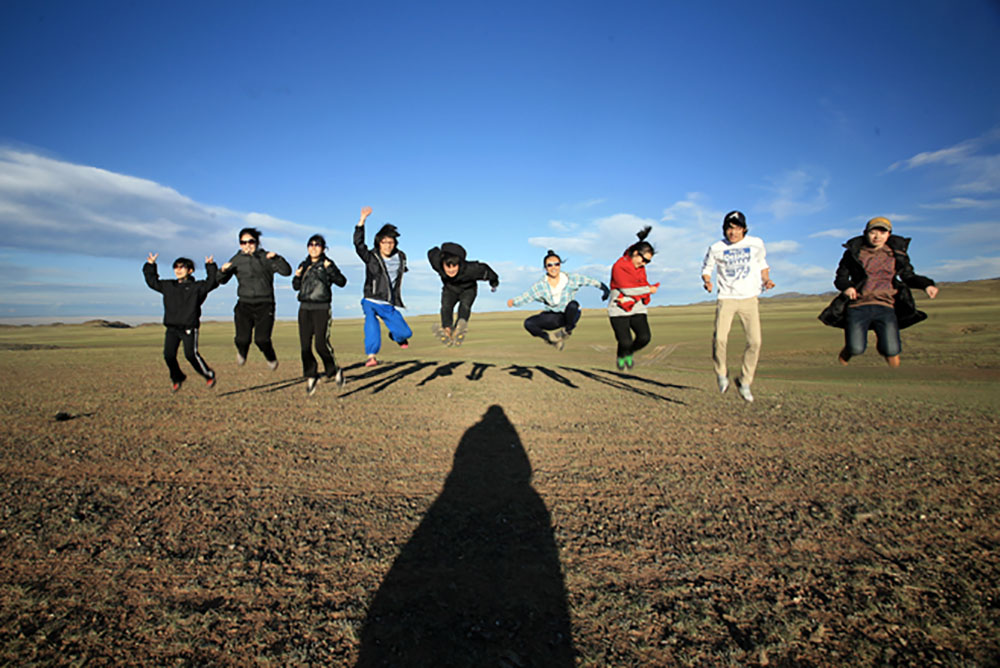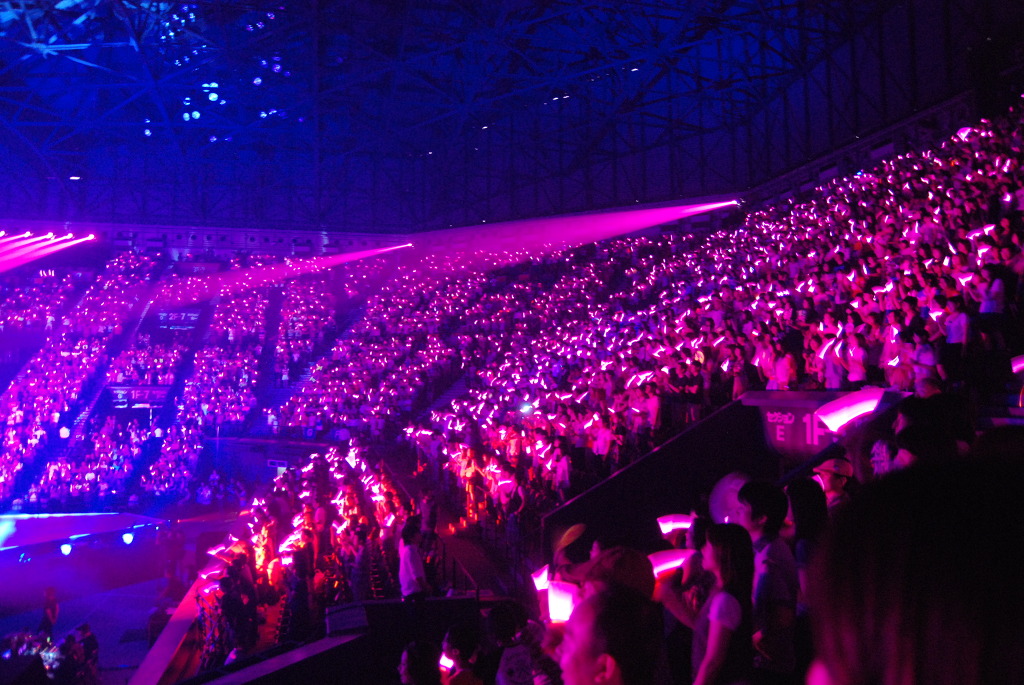
Beyond the 99%: Alternative Education in South Korea
Nearly two decades have passed since the first challenges to South Korea’s predominantly state-driven education sprang up. Can alternative schools change the country’s oppressive education climate?
Yesterday, over 600,000 high school seniors in South Korea took an exam notorious for its competitiveness, high stakes, and the incredible accommodation by the rest of the nation. 14,000 police were stationed in strategic hotspots, ready to drive late test-takers to the exam sites. Banks and the stock market opened an hour late. Airplanes stopped flying for thirty minutes during the afternoon listening test.
But suneung, or the College Scholastic Ability Test, which is an important requirement for university admission, is just a temporary ending to a grueling journey that these students must endure, often starting long before the three years of high school. Education is synonymous with social prestige in South Korea, and suneung is one of the many important stepping stones for the majority of South Korean youth. It’s not the first, nor the last, marker of success or failure in the life of a student, but it’s probably one of the most stressful.

“Not at my school,” laughs Goo Bomyoung, who was a senior at the Flower Peace School in 2011. “It wasn’t the place to study for suneung. If people wanted to take the test, they had to drop out.”
Her school certainly wasn’t conventional: Her senior year consisted of a schedule that she had created herself, with the help of the teachers. There were the familiar subjects, like History, Korean, Japanese (a common foreign language fulfillment among South Korean students).
Then there were some unconventional choices, especially for a typical South Korean senior: Theater, Pansori (a genre of musical storytelling thought to have originated in the 18th century), Confucian texts, thesis-writing. Classes started at 9 a.m and ended at 4 p.m. After school, Bomyoung did extracurriculars, went swimming, and got a good 7 hours of sleep.
None of this sounds particularly remarkable, unless you’re a high school student in South Korea. A typical high school student would sleep less than 6 hours a day, according to a 2013 survey by the National Youth Policy Institute. They would spend 1,020 hours at school, 134 hours more than the OECD average according to a 2012 study. All this studying is most likely complemented by hagwons (private cram institutes), tutors, and/or additional studying at home.
It’s safe to say Bomyoung wasn’t a typical senior. She represents a stark minority, in a country where less than 1% of students are believed to attend alternative schools, beyond the supervision of the Ministry of Education.

Her school, Flower Peace, provides education that is vastly different from what most schools offer. It was founded in 2003, at a time when the alternative education movement was gaining traction, fueled primarily by the student protesters from the late 80s and early 90s who were, by the 2000s, old enough to be parents and didn’t want their own children to receive the same education they had.
“When it started, the alternative education movement was about breaking the formula,” says Hyun Byung-ho, the founder and editor-in-chief at Mindle, a monthly journal on South Korean education founded in 1998. The formula he and other activists wanted to break was the perception that education equals one standardized curriculum. “The children kept hurting. So we wanted to reduce the power of conventional schools.”
Nearly two decades have passed since the alternative movement first began. But it still isn’t clear how many institutions exist, that identify themselves as alternative; it’s also unclear exactly how many students attend them, let alone how many schools operate outside the realm of state control.
“They’re unaccredited, and technically illegal,” says a representative at the Education Ministry’s Department of Student Social Welfare Policy on condition of anonymity. The ministry only regulates and tracks accredited schools, which most alternative schools aren’t — including Bomyoung’s Flower Peace School, which now has a network of five schools nationwide. There are no official policies in place regarding their funding, accreditation, or even a clear census on what alternative education means.
“There’s currently no law that can properly encompass the range of alternatives,” says Lee Sang-hwa, a director at People’s Solidarity for Alternative Education (PSAE). PSAE represents the largest coalition of uncertified alternative schools in South Korea, with 60 member schools teaching over 3,000 students. “The Ministry of Education doesn’t acknowledge different paradigms. Talking to them is like talking to a very high wall. They think that anyone leaving the public education system is a failure, a loser.”
Of course, Bomyoung would not agree with the ministry’s perception. She wasn’t a failure; she was an alternative student by choice. She transferred out of a conventional public school at age eleven because she thought the school was oppressive. In her senior year, she chose not to take the college entrance exam. Instead, she wrote a senior thesis on ‘artistic environmental activism,’ went on a student-planned trip to Mongolia, and performed in a play.

That kind of more humane curricula is common at uncertified alternative schools, which criticize conventional schools for stifling students’ creativity and happiness. The government’s assessment of alternative education, however, isn’t as rosy as the activists’ claims.
“There are lots of facilities claiming to teach alternative education,” the education ministry rep points out. “There are Christian schools, schools that actually function like hagwons, and many more. Several do provide a really alternative education, but lots of places don’t. It’s hard to oversee unaccredited facilities, when we don’t even know to what extent we should define something as alternative.”
Given the diversity of the schools available outside the system, it is difficult to define or monitor ‘alternative education.’ To be fair, the ministry did attempt to ‘legalize’ alternative schools in 2014. But the regulations they proposed, in return for accreditation and possible funding, were met with fierce protests from many institutions. The schools argued that the legalization bill would limit the autonomy and diversity of their education. Eventually, the discussion was dropped.
Perhaps more problematic is that no one knows precisely how many students are receiving alternative education, instead of simply forgoing high school education. (In South Korea education is compulsory up to and including middle school.)
Since last year, the Ministry of Gender and Family has been trying to track down “teenagers outside the school system,” and estimates there are currently 40,000 teenagers whose whereabouts are unaccounted for (compared to the 6 million registered students in 2015). Its Department of Support for Teenagers Outside School, however, doesn’t know how many of these ‘missing’ teenagers are attending uncertified alternative schools.
The Ministry of Education doesn’t provide precise statistics on the number of students enrolled in alternative education, because from its perspective, alternative schools are not legitimate schools. But the estimate it offered in 2014 was that around 230 uncertified, alternative educational facilities were teaching around 9,000 students.
“The actual numbers are probably double the government statistics,” says Lee at PSAE. “There are lots of schools that teach without the ministry’s knowledge.”

The question remains, though, whether all these alternatives can make a difference out in ‘the real world.’ This is a question that Bomyoung must continuously tackle.
“I was full of dreams and confidence about changing the world after graduating,” she says. “In reality, I kept despairing. Will I be able to live well in a society like this? I don’t regret having gone to an alternative school. What I learned was valuable. But at the same time, the stuff I learned were so idealistic, so removed from this society. There’s something called ‘reality.’ Have I been living my life only looking at pretty things?”
In a society where the majority of its high school graduates go to college, Bomyoung chose not to go (and cannot unless she takes a government-administered high school equivalency test). She had to face a lot of raised eyebrows after graduating in 2012, especially while working at a fast-food restaurant. Now she works at a design studio that makes labels for outdoor clothes.
Beyond having a positive impact on individual students, Hyun Byung-ho from Mindle is skeptical about how much the alternative education movement as a whole has changed South Korean education. Sure, alternative models have inspired the government to devise its own accredited, alternative schools and programs. But two decades after the movement first began, most of the country’s students still prepare year after year for Suneung, trapped in a system that predominantly rates young people by their grades.
“Alternative schools just take care of the zero-point-something percent of kids in this country,” says Hyun. “That’s all. That really is less than 1 percent who’s able to breathe.”
Cover Image: Seniors at the Flower Peace School go on a two-week trip to Mongolia. The trip was planned by the students. (Source: Goo Bomyoung)

